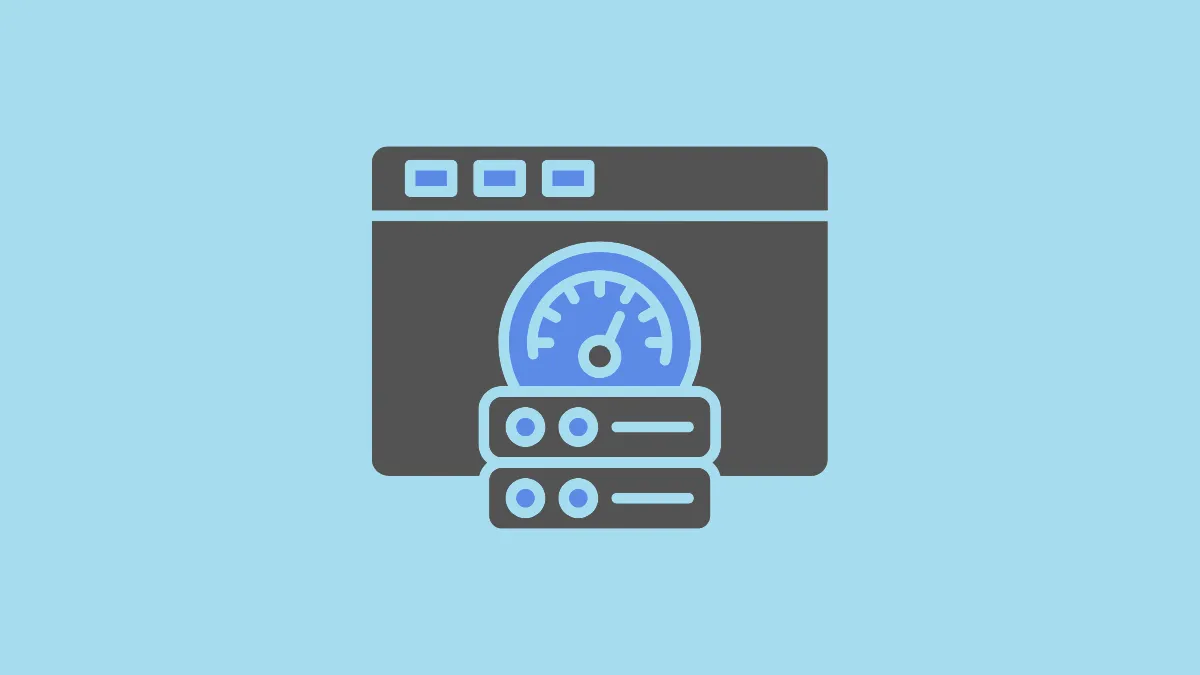In the world of technology, memory usually refers to RAM or Random Access Memory, which acts as the short-term storage for a device. It is used for running applications and allows you to access information quickly, which is also the reason why it can get used up very fast, especially when running heavy programs and games. When that happens, your computer can slow down and you may experience lags and freezes. Fortunately, there are several ways by which you can clear the memory on your Windows 11 system.
1. Close unnecessary applications and disable startup apps
When multiple processes are running simultaneously in the background and unnecessary applications are kept open, your computer's memory can quickly get used up. In this case, you should look for and close all unnecessary processes to clear up the memory.
- Use the
Ctrl + Shift + Escshortcut or right-click on the taskbar and click on 'Task Manager' to open it.
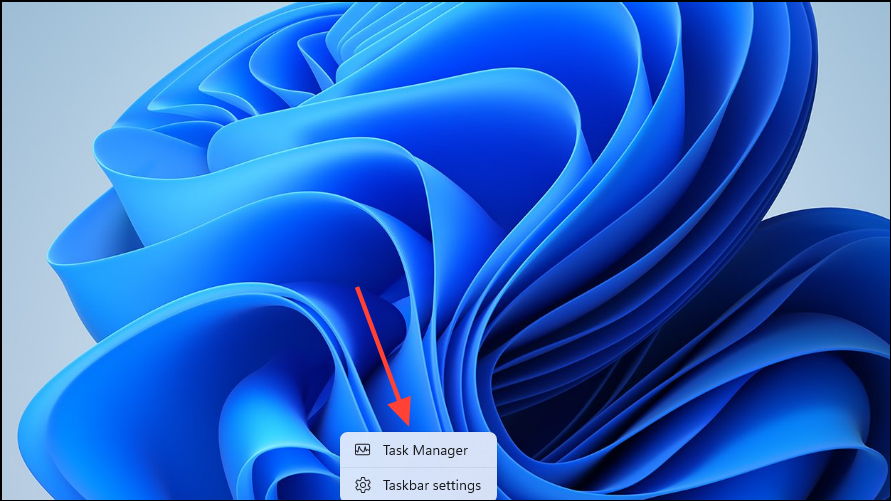
- Once the Task Manager is open, you will see all running processes on the right side. Right-click on the process you want to close and then click on 'End task'.
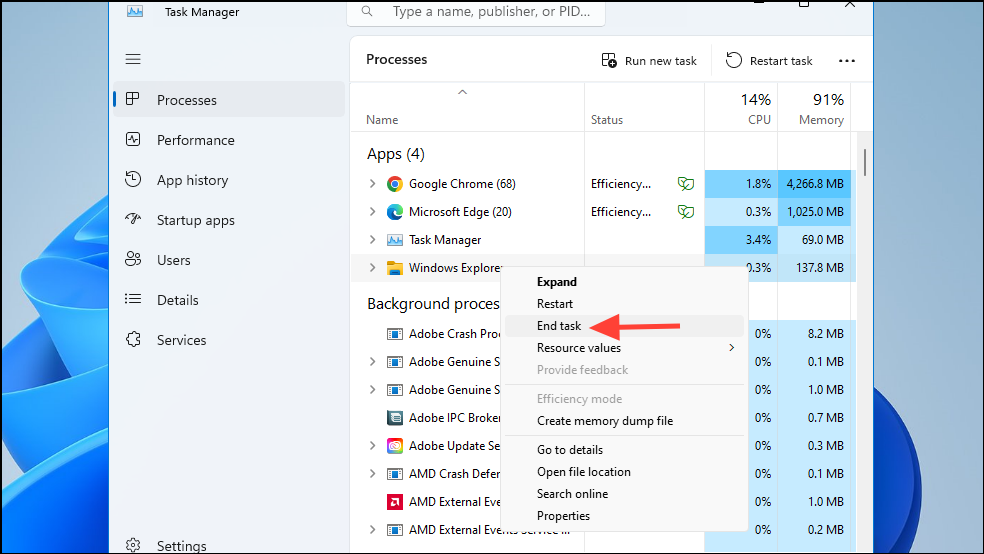
- Do this for all the processes you are not actively using, but leave the system processes running. This should help clear up some memory. Now, click on 'Startup apps' on the left.
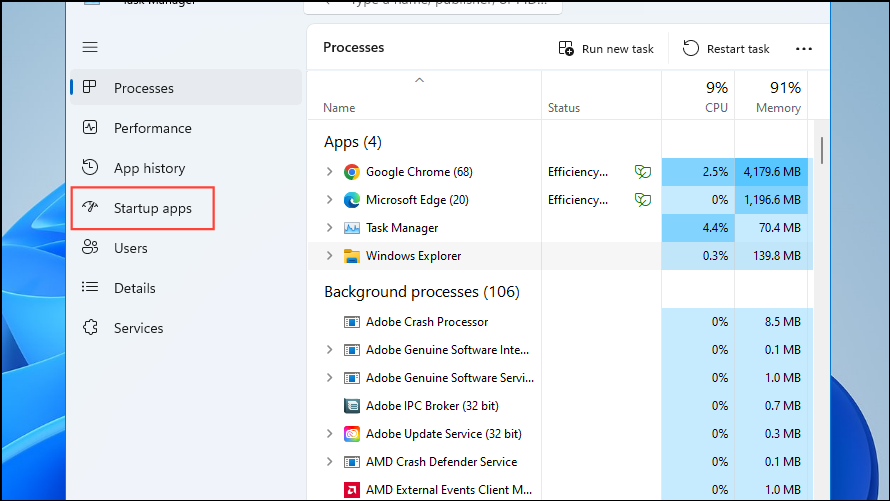
- All applications that start running when your computer boots up will appear on the right. Right-click on the apps you want to disable and then click on 'Disable'. Do this for all the programs you want to stop from starting when you turn on your PC.
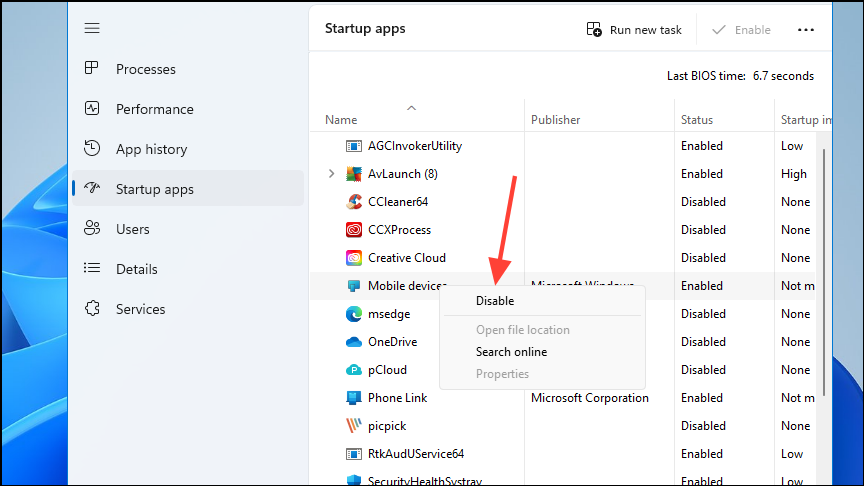
2. Turn off visual effects
Visual effects and animations also use memory, which means turning them off can help you clear some of it.
- Open the Settings app and click on 'Accessibility' on the left.

- On the Accessibility page, click on 'Visual effects'.
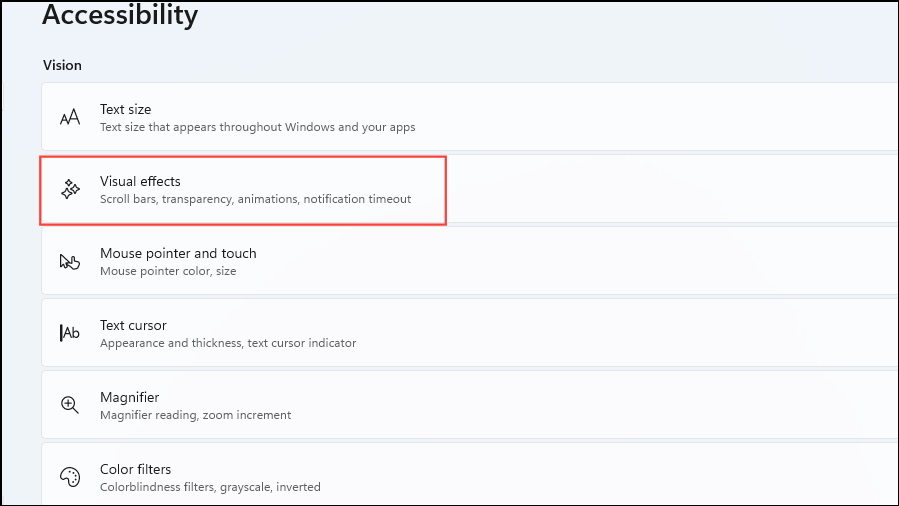
- Then click on the toggles next to the 'Transparency effects' and 'Animation effects' options to turn them off.
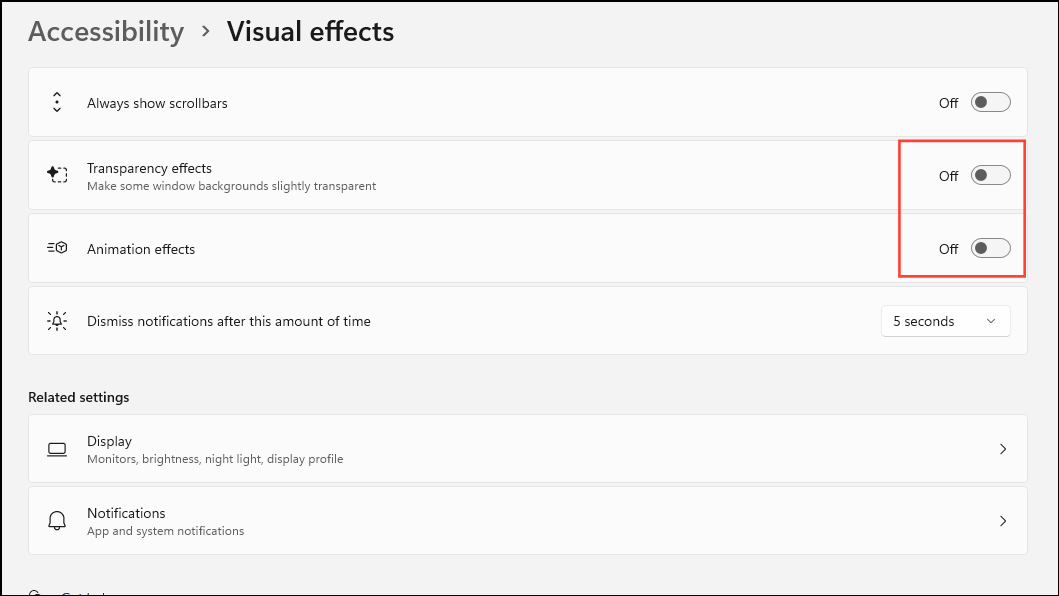
3. Clear page file
When you have very little RAM on your PC, the page file serves as virtual memory for storing data. However, with time, it can also get used up and needs to be cleared.
- Open the Start menu, type
regeditand click on 'Registry Editor'.
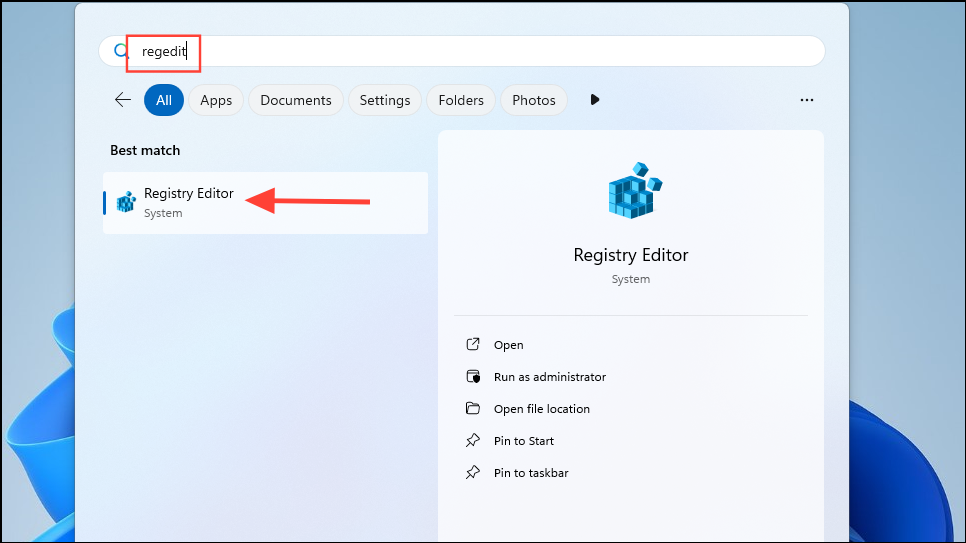
- When the Registry Editor opens, navigate to the following directory:
HKEY_LOCAL_MACHINE\SYSTEM\CurrentControlSet\Control\Session Manager\Memory Management.

- Double-click on the 'ClearPageFileAtShutdown' on the right to edit it.
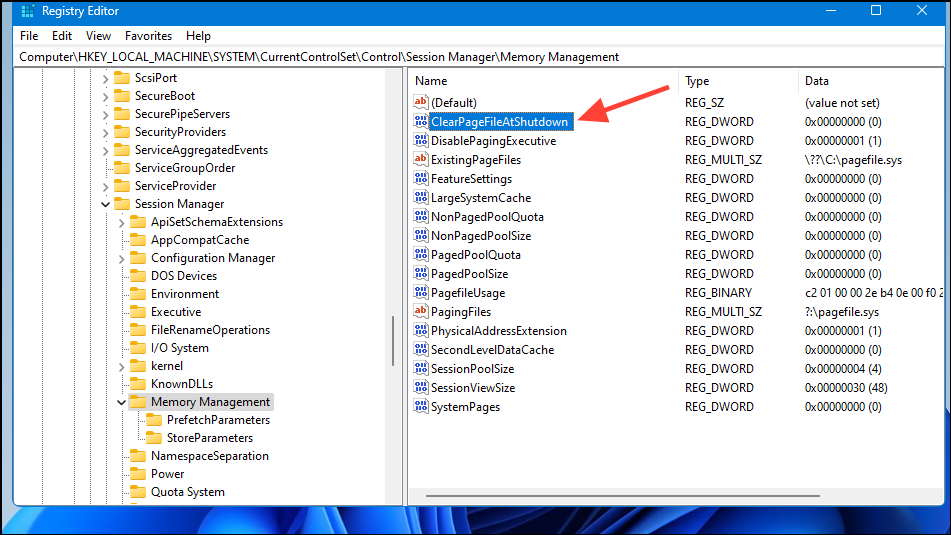
- Set the value as
1and then click on the 'OK' button.

- Then close the Registry Editor and restart your computer.
4. Remove unneeded programs
Consider removing applications you don't use since they can sometimes run in the background or install updates that use memory.
- Open the Settings app and click on 'Apps' on the left.

- Next, click on 'Installed apps' on the Apps page.

- Now you will see all installed apps on the next screen. Click on the three dots on the right of the app you want to remove and then click on 'Uninstall'.

5. Clear the cache
The easiest way to free up memory on Windows 11 is by clearing the cache from the settings.
- Open the Settings app and click on 'System' on the left.

- On the System page, scroll down and click on 'Storage'.

- Next, click on 'Temporary files'.
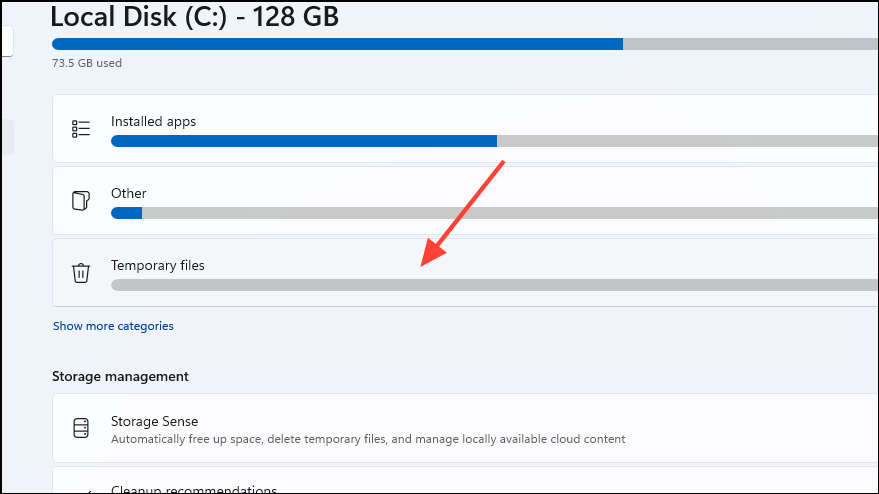
- Now you will see all temporary files that you can remove to clear the cache. By default, all items will be selected. You can click on the checkbox next to an item to deselect it. When you're done, click on the 'Remove files' button.

6. Run disk cleanup
Disk Cleanup is a tool built into Windows that lets you clear the cache quickly.
- Open the Start menu, type
disk cleanupand select the tool when it appears in the search results.
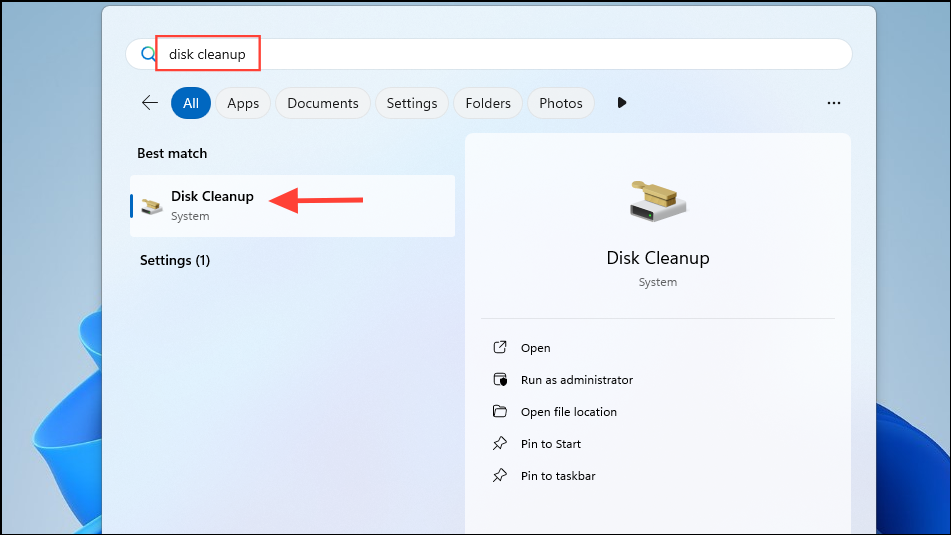
- When the tool appears, click on the dropdown menu and select the drive from which you want to remove temporary files and clear up the memory. Then click on the 'OK' button.
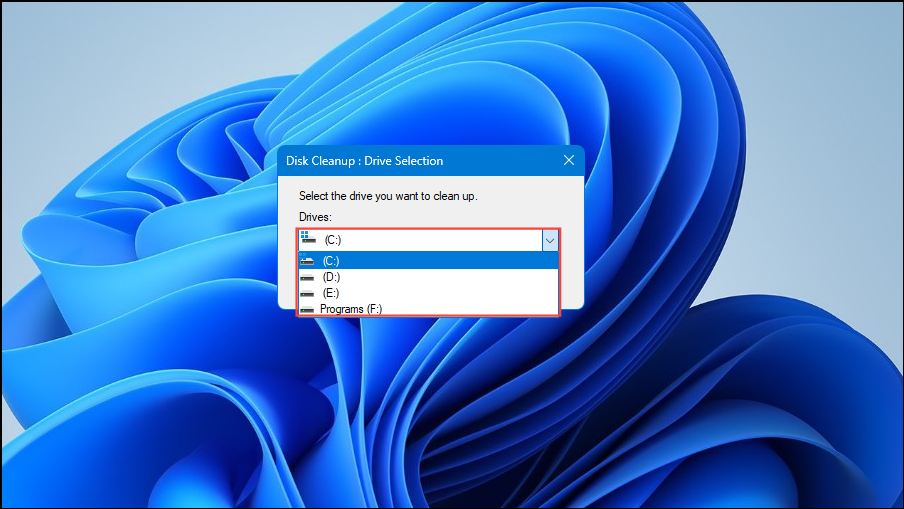
- Now you will see all the cache files you can remove. Select or deselect items by clicking on the checkboxes next to them and click on the 'OK' button. Make sure that the 'Temporary Internet Files' checkbox is selected.
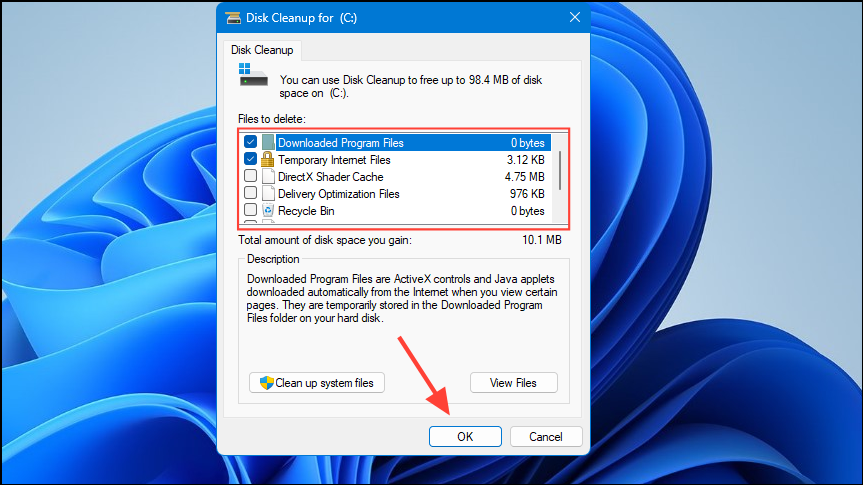
7. Clear the app cache
When you run applications on Windows, their cache files which use memory are stored in the temporary folder. Removing these files can help you clear up memory on your PC.
- Open the 'Run' dialog using the
Win + Rshortcut and then type%temp%inside it before pressing Enter.
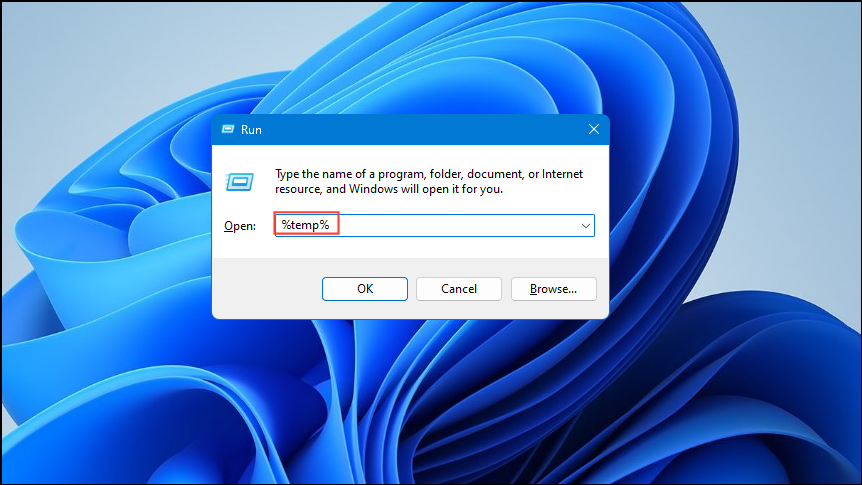
- The Temp folder will open in a new File Explorer window. Select all the files inside using the
Ctrl + Ashortcut and then delete them. Keep in mind that you may not be able to delete some files, so skip them when the prompt appears.
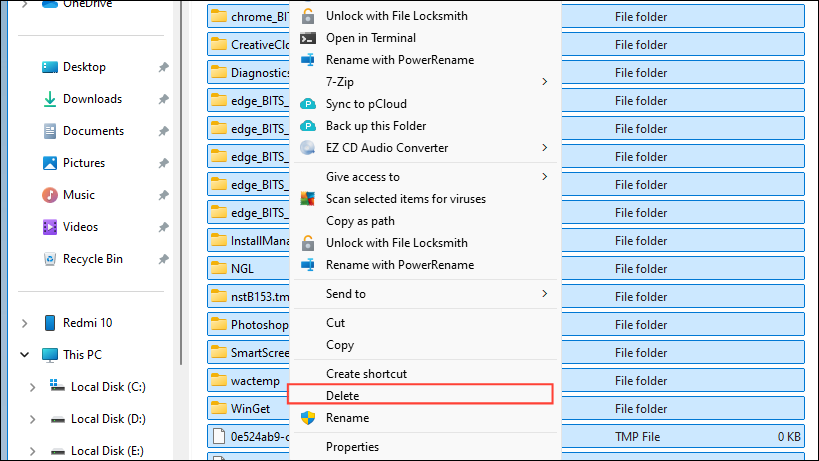
8. Turn off background apps
Apps running in the background continuously use memory. Turning them off can help you clear memory on your Windows 11 PC.
- Open the Apps page in the Settings app and click on Installed apps as explained previously.
- Now, click on the three dots on the right of the app you want to turn off and click on 'Advanced options'. This will only be available for certain apps, such as certain system ones.
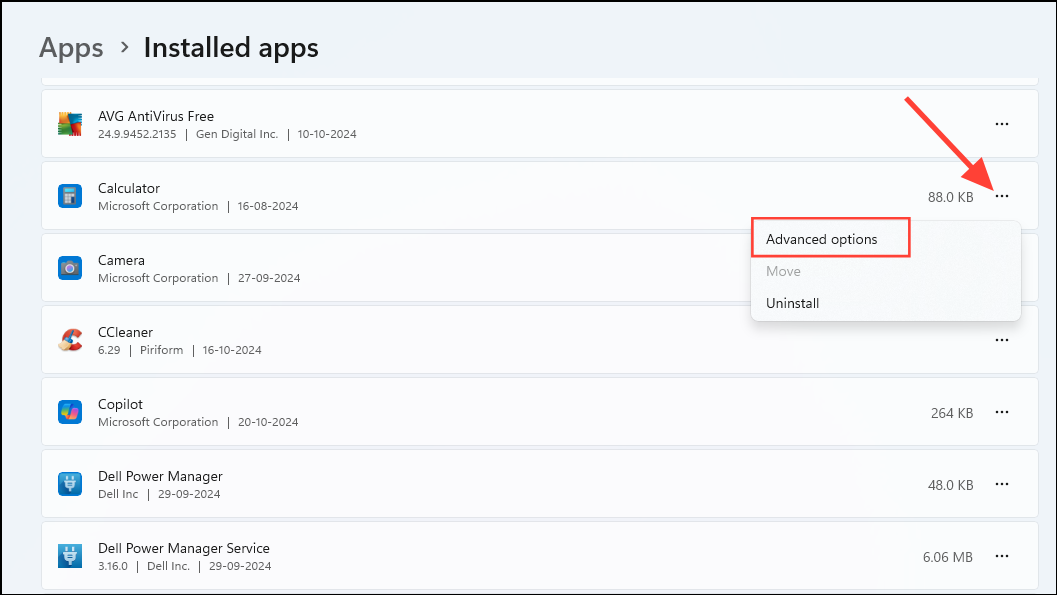
- Now, click on the 'Let this app run in the background' dropdown menu under the 'Background apps permissions' section and select 'Never'.

Things to know
- If possible, save your work and restart your computer. This will close all running programs and clear the memory.
- Outdated software may contain bugs resulting in problems like memory leaks, which you can prevent by keeping your programs updated to the latest version.
- Similarly, obsolete drivers can cause low-memory problems due to leaks and similar causes. Check that your device drivers are up to date and update them if they are not.
- Sometimes your computer may be low on memory even though you have plenty of RAM. If that's the case, try running a malware scan since viruses and malware can sometimes cause memory-related issues.
- On machines with a low amount of RAM, clearing the memory may not be enough. You may have to rely on features like ReadyBoost or third-party tools that can help you supplement or clear the memory.

